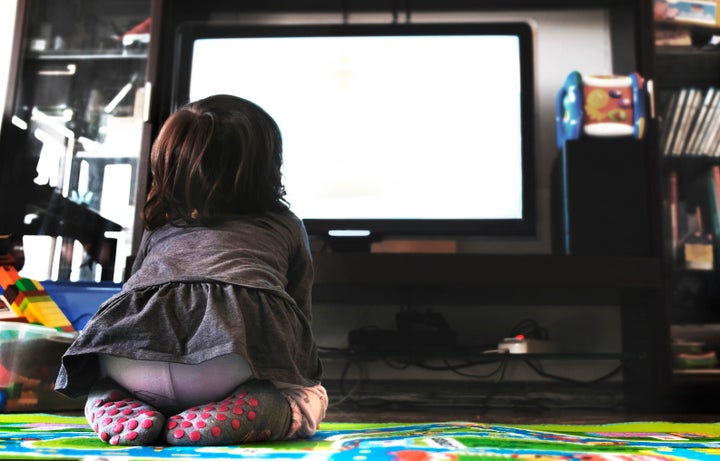The World Health Organisation has issued new guidelines on screen time for the under-fives – and it’s intense. And by ‘intense’, I mean virtually impossible.
The guidelines suggest no screen time at all for babies under two, and that children between the ages of two and four shouldn’t have more than an hour of ‘sedentary screen time’ each day.
I’m the parent of a two-year-old and seven-year-old, and, I’m not proud of it, but I simply don’t understand how you get anything done without devices.
I rely on TV in the mornings to keep my kids in one place, while I rush around like Challenge Anneka (the TV show I watched as a child, as my parents did much the same thing). I need to shower, dress and get ready for work; make lunches, gather up homework, find and sign permission slips for school trips and put them in bags. I need to feed the cat, make sure the kids have their shoes on, remove inappropriate items of clothing such as tiaras and fairy wings and sort out spare clothes for the toddler to take to nursery.
I need to remind them 15 times to brush their hair and teeth – and all of this has to be done between 7.30 and 8am. At that time of day, CBeebies is a babysitting lifeline.

Screentime also means I don’t lose track of my kids, because for once they’ll stay where they’re put – in the living room – which is important when you consider my toddler has developed a penchant for playing hide-and-seek. (I regularly tear my hair out worrying he’s managed to unlock the front door and wander out of the house, before I hear giggles from behind the curtains.)
I understand the point behind the WHO advice, and am fully behind the message that kids need active play to grow up healthy – I worry about research telling us 75% of children are less attentive and have a tendency to ignore parents after using devices. And I agree that it feels ‘wrong’ to prop your baby in front of a screen when they’re not old enough to sit up by themselves.
But life isn’t quite so clear-cut – and we really should stop making parents feel guilty about what they need to do to get by. Plus, if you’ve got mixed-age kids, it’s simply not feasible to allow screen time for one, and to ban it for the other, is it? (If it is, please tell me the secret.)
The daily grind is hard enough, and we have limited tools in our parenting arsenal. It’s not possible to spend quality time with your kids – playing with Lego, painting pictures, reading books – all of the time. Sometimes, just sometimes, you need a break, or to change out of your pyjamas.
And in those moments, watching 20 minutes of a programme about how machines work (thank you, Maddie Moate) or about kids with different lives and challenges (high-five, Mr Tumble) can provide the perfect solution.
Not all TV is bad. It can broaden minds and inspire conversation, and there’s even something a little magical about my children sharing a favourite TV programme together, despite their five-year age gap.
The chances are that if you’re the type of parent who’s worrying about screen time, you’re a pretty good parent in the first place. So, relax. These ‘guidelines’ are just that – they’re not a cut-and-dried manifesto for living.
Even Dr Max Davie, officer for health improvement for the Royal College of Paediatrics and Child Health, warned that simply proposing these standards without providing the right support could discourage families, rather than motivate them.
“While it is important for children to be as active as possible, the barriers are more frequently to do with housing, work patterns, family stress, and lack of access to play spaces rather than actively choosing to be sedentary,” he said, adding that current research has not yielded strong enough evidence to support the setting of screen time limits.
At the end of the day, we’re all just trying to get through. And what we should really be telling parents is that it’s enough, simply, to try their best.